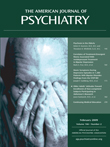To the Editor: In their excellent, comprehensive Treatment in Psychiatry article on Asperger’s syndrome, published in the August 2008 issue of the
Journal, Karen Toth, Ph.D. and Bryan H. King, M.D.
(1) implicitly pointed to the inherent problems, particularly in evaluating young children, of a categorical nomenclature such as DSM. For example, the authors stated that “diagnosing Asperger’s syndrome can be tricky, as the diagnostic criteria are not clearly differentiated from those defining autistic disorder” (
1, p. 962). A more dimensional diagnostic approach can be found in the Psychodynamic Diagnostic Manual
(2) .
In the assessment of children, rather than focus on the exact categorization of any particular child, the clinician should evaluate the nature of the child’s social interactions with parents, siblings, relatives, and other children and significant adults as well as how others interact with the child. One needs to understand the nature of the child’s responses (appropriate, under-reactive, over-reactive) to sensory stimuli as well as the nature of his or her fine and gross motor development, language development, memory, fund of knowledge, and ability to understand social situations. A central clinical question is regarding whether the child’s development has proceeded smoothly or unevenly.
In addition, it is necessary for the clinician to evaluate the degree to which the child’s feelings (mainly depression or anxiety) affect his or her ability to function as well as his or her sense of self, without focusing too much on the concept of comorbidity. The clinician must determine the degree to which the child’s problems are “externalizing,” “internalizing,” or a combination of both. Finally, it is important to evaluate the degree to which the child feels internal conflict in contrast to conflict with other people as well as the degree to which he or she can differentiate his or her fantasy life from real experiences.
Drs. Toth and King presented such a paradigm and discussed a treatment plan whereby one can maximize the strength of the child and address the child’s developmental delays and deviations—whether they are linguistic, academic, or social—and various other symptoms. Such an approach, of course, might require an integrated interdisciplinary model.
Since the capacity to relate in general can be defined on a spectrum (from no ability to relate at one end to well-related at the other), one can observe clinically many situations in which a psychodynamic approach could address the potential conflicted origins of certain social aversion, even in a child who is diagnosed with Asperger’s syndrome. Such an aversion may be the child’s defensive retreat from an anxiety-filled state when attempting social interactions.

